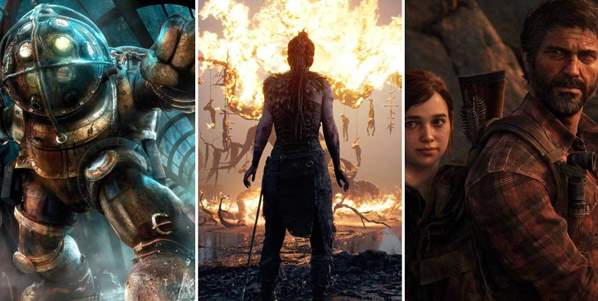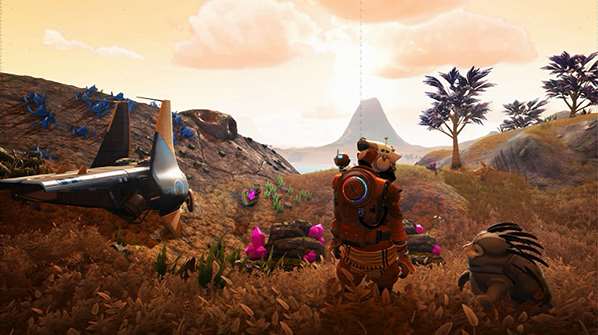
Video games have become much more than just entertainment. With the growth of the gaming industry, they have evolved into complex forms of art, combining storytelling, music, design, and interactive experiences. Today, games also have the power to develop positive skills, educate, and inspire millions of players worldwide. From creating game environments to producing fan-made content, video games are transforming the boundaries of creativity in remarkable ways. In this article, we will explore the artistic aspects of video games, how they inspire creativity in both players and developers, and the growing cultural impact of games as an art form.
Game Worlds as Art Example
As mentioned in the previous paragraph, the gaming industry has evolved significantly, going far beyond entertainment. Modern video games can be viewed as interactive galleries where players explore vast worlds crafted with artistic precision. A great example is the The Legend of Zelda, God of War, and Assassin’s Creed series, which are renowned not only for their gameplay but also for their stunning visual elements that allow players to fully immerse themselves in the experience. Developers use elements such as color palettes, soundscapes, and architectural designs to create atmospheres that transport players to entirely new realities. These games also feature compelling storylines that rival literary narratives.
In many cases, the creativity involved in building these worlds goes beyond traditional forms of art. Players actively engage with the artwork by interacting with it—whether through exploration, decision-making, or problem-solving. This interactivity fosters a unique connection between the audience and the creators, creating an emotional experience that surpasses what passive media like films or books can offer.
Esports has also followed this trend, evolving from ordinary tournaments into grand events and spectacles. Tournaments in top esports disciplines boast impressive organization, decorations, and even exhibitions, making these events more exciting for fans.
How Video Games Spark Player Creativity
In addition to immersive environments, many games offer players the opportunity to create their own content. Sandbox games like Minecraft and The Sims encourage creativity by providing open tools that allow users to build structures, tell stories, and create their own experiences. This fosters creativity as players engage with these games. Similarly, games with modding communities, such as Skyrim, inspire fans to develop custom content—from new quests to visual modifications—extending the game’s lifespan and promoting artistic collaboration. Thanks to these communities and cooperative efforts, many games remain relevant and engaging over time.
Another way games spark creativity is through puzzles and strategy titles. In these games, players are not only immersed in the environment but must also think strategically, much like in cs2 live stats, to complete levels and achieve victory. Titles like Sid Meier’s Civilization VI and Northgard serve as excellent examples of how developers combine stunning visuals, rich environments, and challenging gameplay to stimulate creative thinking.
Moreover, fan art, cosplay, and storytelling—frequently shared across social media—highlight how games inspire players to explore creative avenues beyond the screen. This participatory culture strengthens the bond between game developers and their audience, further demonstrating the impact of games as an artistic medium.
Video Games in Education and Cultural Expression
Games are increasingly used in educational and cultural initiatives to promote creativity and critical thinking. Educational games challenge players to solve problems creatively, often requiring them to think outside the box. A good example is interactive games that demand actions and responses from students, influencing game progress, as well as platforms like Roblox, which allow players to design entire levels or games, helping them develop skills in programming, design, and storytelling.
Moreover, games are becoming powerful tools for cultural storytelling. Titles like the God of War series introduce players to the mythology of different cultures, blending gameplay with folklore and art that reflects authentic cultural heritage. Similarly, Okami draws inspiration from Japanese painting techniques, combining traditional artistic elements with interactive gameplay. These projects illustrate how games can preserve cultural identity while inspiring new generations to engage creatively with their roots.

The Future of Art in Gaming
Although the gaming industry can be considered well-developed, with games already being high-quality and engaging, advancements in technology offer the potential for even greater artistic achievements. Virtual Reality (VR) and Augmented Reality (AR) present exciting opportunities for fully immersive artistic experiences. Many games that support these technologies already blend gameplay with creative expression, inviting users to move, draw, and create in virtual spaces. These innovations have introduced new gaming genres and attracted even more enthusiasts.
AI-powered tools are also starting to influence game development. Procedural generation—a technique used in games like No Man’s Sky—creates endless variations of landscapes, encouraging both developers and players to explore new creative frontiers. This approach adds complexity and intrigue to games. In the future, we may see more personalized artistic experiences, where players contribute to the creation of game worlds in real-time, further blurring the lines between creator and consumer.
Conclusion
Bringing all the facts together, it’s clear that the fusion of art and games has transformed both industries, creating a new medium where creativity and imagination thrive. Video games inspire both players and developers to push creative boundaries, whether through immersive environments, fan-made content, or educational programs. They help players develop positive skills and foster creativity. As technology advances, the artistic potential within games will continue to grow, making this medium even more influential in the cultural landscape. Ultimately, video games show that art is not confined to traditional media—it is alive, interactive, and encourages everyone to participate and create.





Wanting to know what year is this article published
Hi, This article was published October 2024.